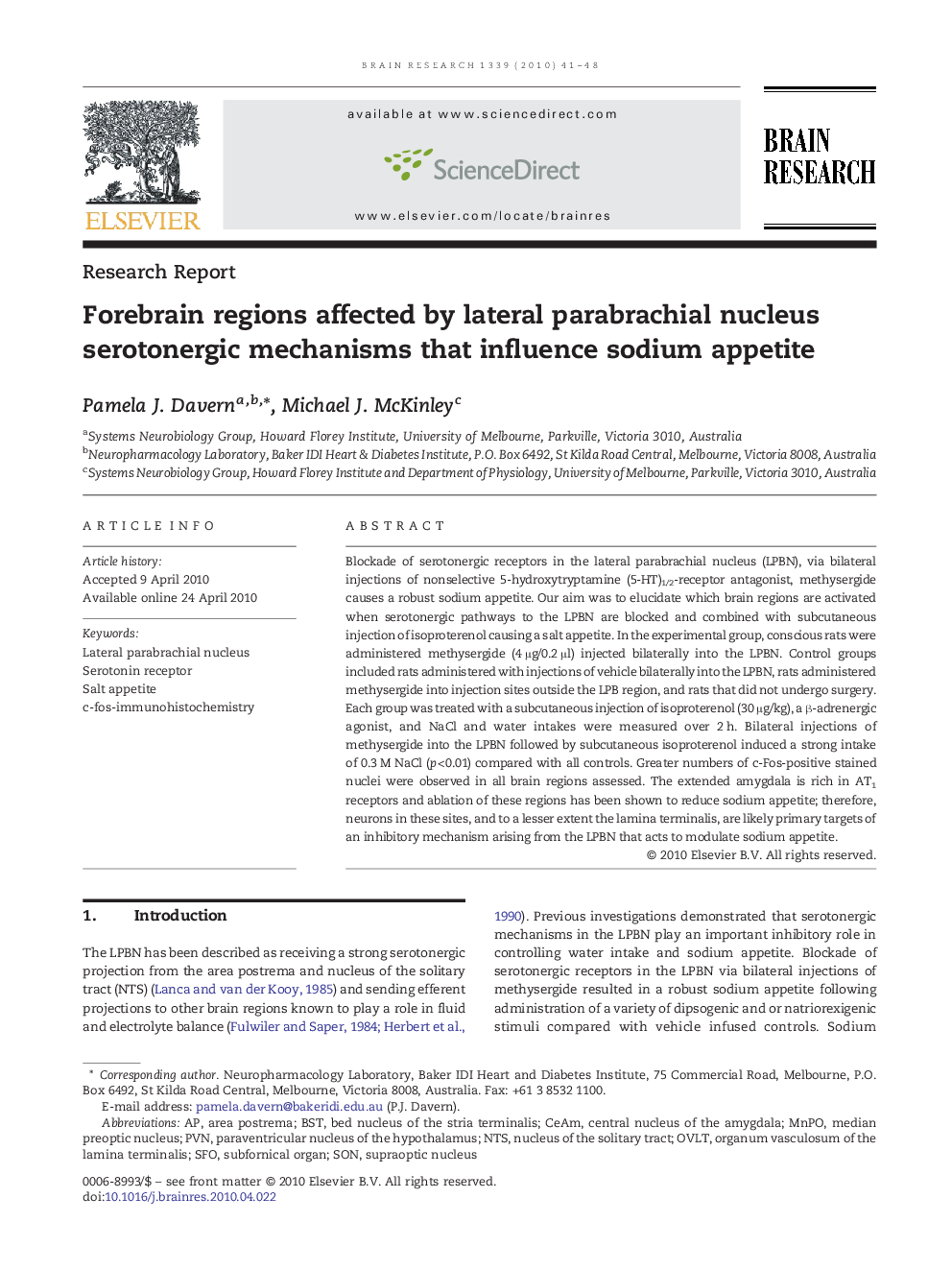| Article ID | Journal | Published Year | Pages | File Type |
|---|---|---|---|---|
| 4326896 | Brain Research | 2010 | 8 Pages |
Blockade of serotonergic receptors in the lateral parabrachial nucleus (LPBN), via bilateral injections of nonselective 5-hydroxytryptamine (5-HT)1/2-receptor antagonist, methysergide causes a robust sodium appetite. Our aim was to elucidate which brain regions are activated when serotonergic pathways to the LPBN are blocked and combined with subcutaneous injection of isoproterenol causing a salt appetite. In the experimental group, conscious rats were administered methysergide (4 μg/0.2 μl) injected bilaterally into the LPBN. Control groups included rats administered with injections of vehicle bilaterally into the LPBN, rats administered methysergide into injection sites outside the LPB region, and rats that did not undergo surgery. Each group was treated with a subcutaneous injection of isoproterenol (30 μg/kg), a β-adrenergic agonist, and NaCl and water intakes were measured over 2 h. Bilateral injections of methysergide into the LPBN followed by subcutaneous isoproterenol induced a strong intake of 0.3 M NaCl (p < 0.01) compared with all controls. Greater numbers of c-Fos-positive stained nuclei were observed in all brain regions assessed. The extended amygdala is rich in AT1 receptors and ablation of these regions has been shown to reduce sodium appetite; therefore, neurons in these sites, and to a lesser extent the lamina terminalis, are likely primary targets of an inhibitory mechanism arising from the LPBN that acts to modulate sodium appetite.
